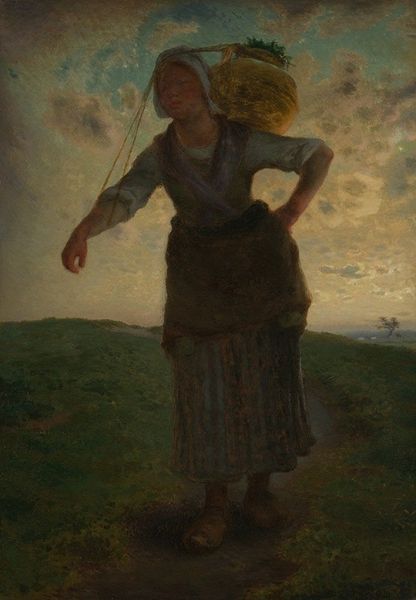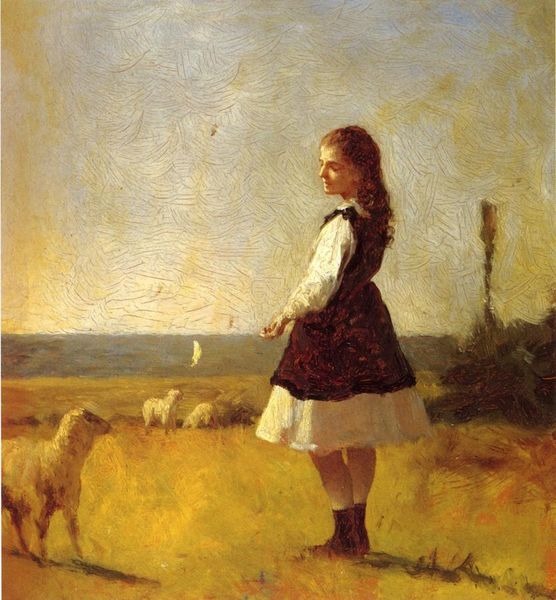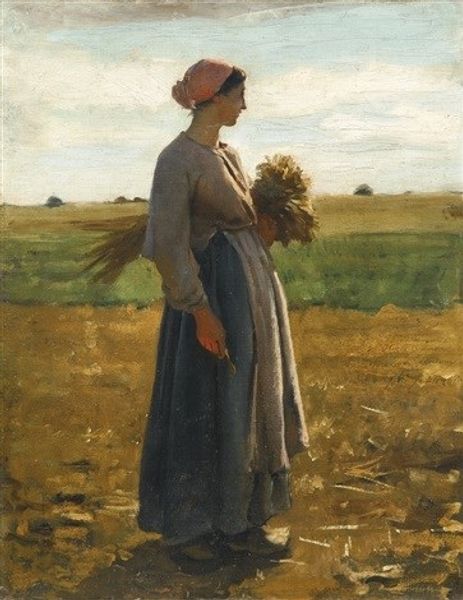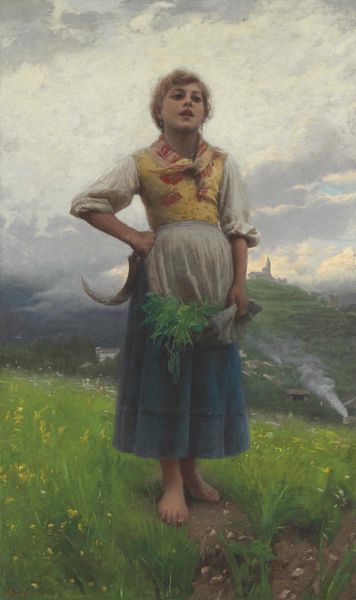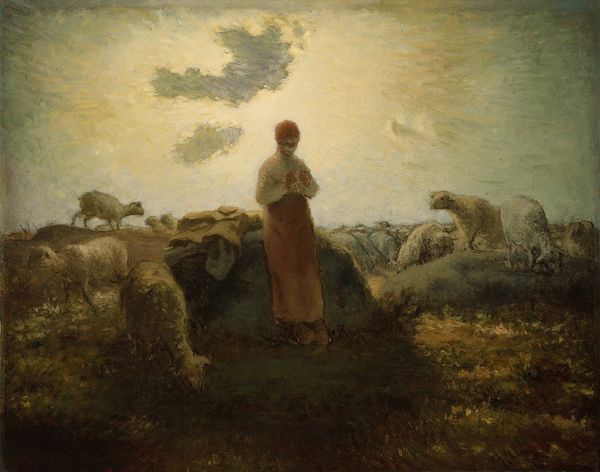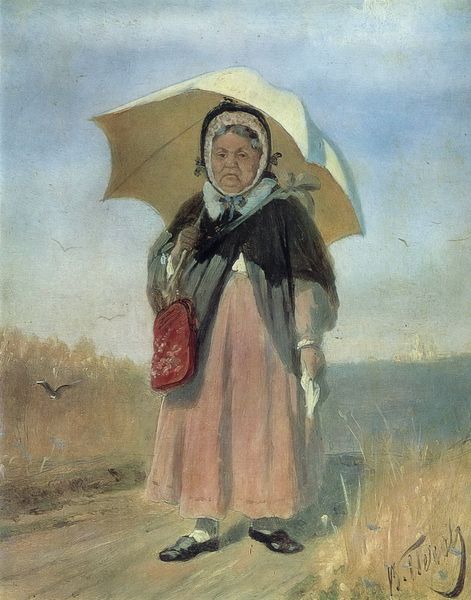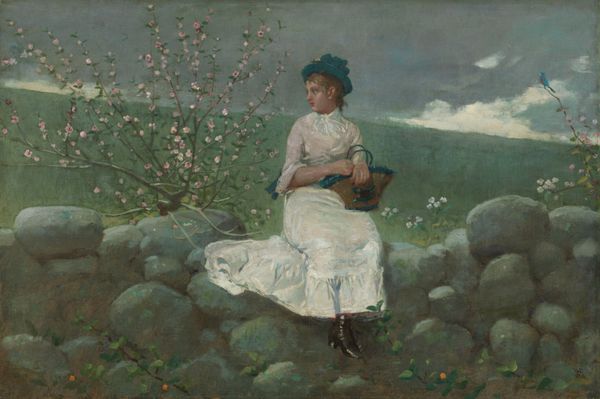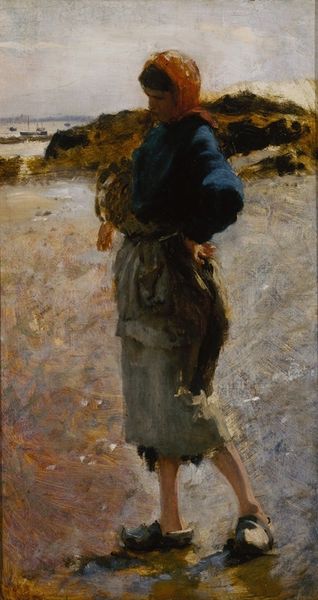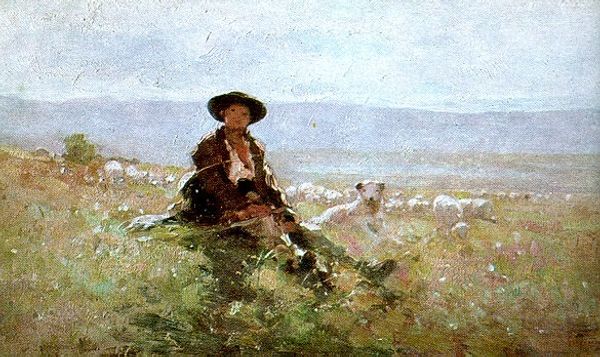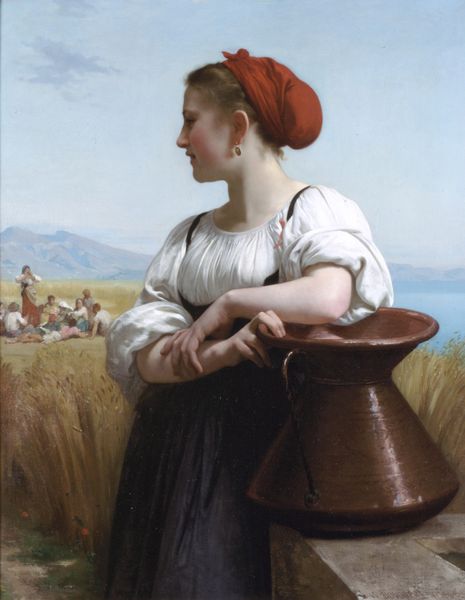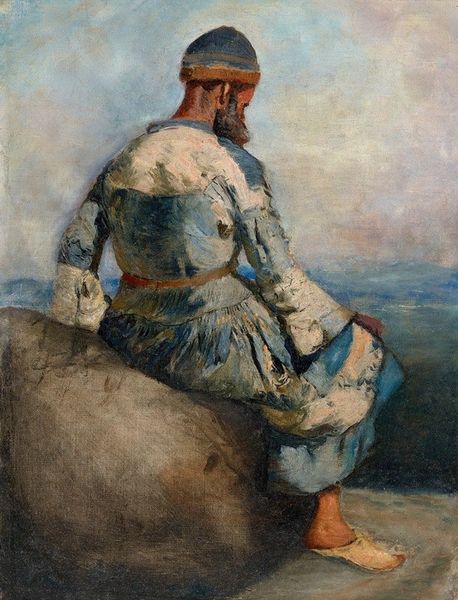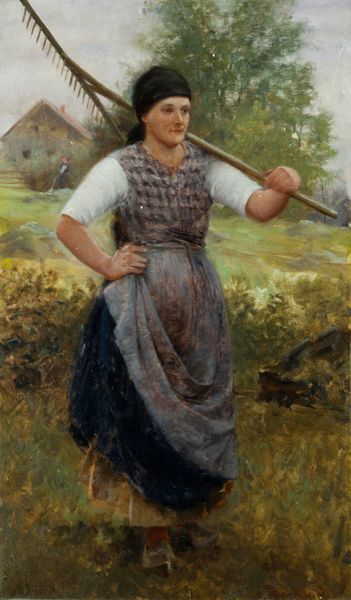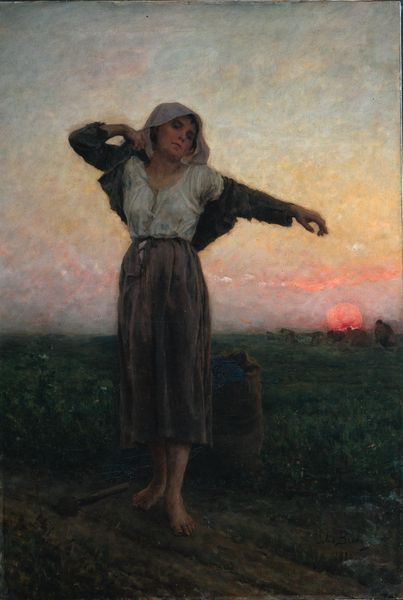
Dimensions: 162 x 113 cm
Copyright: Public domain
Curator: Jean-François Millet’s “The Young Shepherdess,” painted in 1873, offers us a glimpse into rural life. Editor: It’s striking. The somber palette almost mutes the scene, lending a gravity to what might otherwise be a simple pastoral subject. Curator: Millet aimed for that gravity, I think. As part of the Realist movement, he wanted to depict the everyday lives of the working class without idealization, a shift from Romanticized depictions of peasantry. He gained recognition by painting rural scenes like this, drawing attention to those largely forgotten. Editor: But even in its realism, there’s still a constructed narrative. Look at how the young woman is positioned, almost monumental against the landscape. She embodies labor but also resilience and a certain quiet dignity, even. How aware was Millet of the socio-political weight he was placing on these figures? Curator: Certainly, the Barbizon school, and Millet in particular, became quite politically charged. They were actively seeking an honest portrayal of rural life in France. He submitted to, and achieved success, in exhibiting at the Salon—he was entering these works into very public debates on labor and the French countryside. Editor: I’m intrigued by her interaction with the lamb. It speaks to ideas of vulnerability and care, especially considering the historical context of child labor and the burdens placed on young women in these agricultural settings. Is this, in some ways, also about the precarity of youth? Curator: Absolutely. Consider how paintings were disseminated through engravings and prints. Images like this permeated visual culture. What’s interesting is the public’s evolving reaction – a simultaneous recognition of hardship, coupled with, at times, a sentimental romanticism for rural simplicity. This juxtaposition underscores how artistic depictions shape collective consciousness. Editor: So we're left grappling with the intersections of realism and representation. I find it compelling how Millet's work opens dialogues on visibility, labor, and even the romanticized notions we project onto the rural working class. Curator: Indeed, considering this canvas within its historical milieu and through modern lenses can reveal much about evolving social perspectives and the enduring power of art to provoke introspection.
Comments
No comments
Be the first to comment and join the conversation on the ultimate creative platform.
